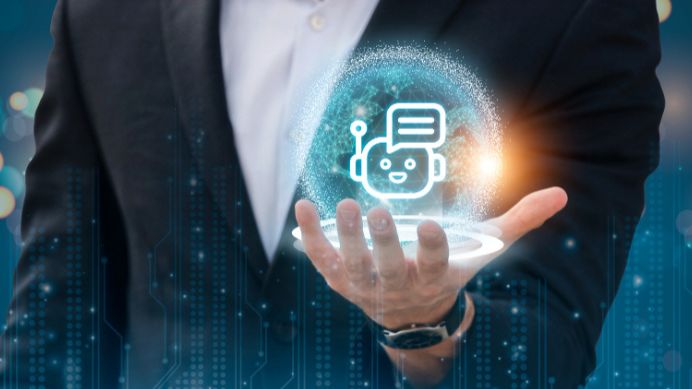
What is an AI Agent? Types of AI Agents
The rise of AI agents is transforming the way we live and work, with adoption rates and market growth that are impossible to ignore. In 2025, an astonishing 85% of enterprises are expected to use AI agents, driven by the need for greater efficiency, cost savings, and improved customer experiences.
The global market for AI agents, which was valued at $3.7 billion in 2023, is projected to skyrocket to $150 billion by 2025. On the consumer side, 75% of smartphone users now rely on AI-powered voice assistants like Google Assistant, Amazon’s Alexa, and Apple’s Siri for daily tasks, from reminders to smart home management.
But what exactly are AI agents, and how are they shaping industries today? In e-commerce, AI agents streamline order placement, provide personalized shopping recommendations, and enable dynamic pricing—making online shopping smoother and more tailored than ever before.
AI Agents: Use cases in different sectors
In healthcare, AI agents support doctors with diagnostic insights, automate administrative tasks, and even provide 24/7 virtual health assistance to patients.
Manufacturers are using AI agents to optimize production schedules, reduce equipment downtime, and improve quality control on the factory floor.
Meanwhile, in finance, AI agents analyze stocks, optimize portfolios, and deliver personalized investment advice, helping both individuals and businesses make smarter decisions.
From powering customer service chatbots that resolve issues instantly to managing complex supply chains and predicting market trends, AI agents are no longer a futuristic concept—they are the backbone of modern business and daily life. As adoption accelerates, their impact will only deepen, driving innovation, efficiency, and personalization across every sector.
How do AI agents work?
AI agents are autonomous systems designed to perceive their environment, make decisions, and take actions to achieve specific goals with minimal human intervention. Their operation is built on a modular architecture, where each component plays a distinct role in enabling intelligent behavior.
Core components and workflow
- Perception/sensors: AI agents begin by gathering information from their environment using sensors or data inputs. This could include text, images, audio, or structured data from APIs and sensors.
- Interpretation/perception handling: The raw data is processed and interpreted to form a structured understanding of the environment, often using technologies such as natural language processing or computer vision.
- Reasoning and decision-making: The agent uses a decision-making engine to analyze the interpreted data, reason about possible actions, and plan the best course forward. This step is often powered by large language models (LLMs) or reinforcement learning algorithms, allowing the agent to handle complex tasks, adapt to new situations, and prioritize actions.
- Action/actuators: Once a decision is made, the agent executes actions through actuators or software commands. This could mean sending messages, triggering APIs, moving a robotic arm, or updating a database.
- Tool integration: Modern AI agents can extend their capabilities by calling external tools, APIs, or automation systems, enabling them to access real-time data, perform computations, or interact with other software systems dynamically.
- Memory systems: AI agents maintain short-term (working) and, in some cases, long-term memory. This allows them to retain context, learn from previous experiences, and improve over time, making their behavior more adaptive and intelligent.
- Communication: Advanced agents can interact with humans, other agents, or external systems via natural language generation and protocol-based messaging, ensuring seamless collaboration and integration.
What are the types of AI agents?
AI agents come in several distinct types, each designed with different capabilities to perceive, reason, and act in their environments. Understanding these types helps clarify how AI agents function and where they are best applied. The main types of AI agents are:
1. Simple reflex agents
These agents operate based on predefined condition-action rules. They respond directly to the current percept without considering past experiences or future consequences. Their behavior is purely reactive and suitable for environments with stable, well-defined rules. For example, a simple reflex agent might automatically reset a password if a user’s message contains specific keywords. They are easy to design but are limited by their lack of memory and adaptability.
2. Model-based reflex agents
Unlike simple reflex agents, model-based agents maintain an internal model of the environment. They combine current percepts with this model to infer unseen aspects and make more informed decisions. This allows them to handle partially observable environments and consider the consequences of their actions. For instance, a model-based agent can track the state of a system over time to respond appropriately.
3. Goal-based agents
Goal-based agents try to achieve specific objectives. They plan sequences of actions by evaluating how different choices bring them closer to their goals. This proactive behavior enables them to handle complex tasks that require foresight and planning, such as managing customer onboarding or navigating a robot through a maze.
4. Utility-based agents
These agents not only pursue goals but also evaluate the desirability of different outcomes using a utility function. They choose actions that maximize overall utility or benefit, balancing multiple factors rather than simply reaching a goal. For example, a utility-based agent might select a flight ticket that optimizes both cost and travel time according to user preferences.
5. Learning agents
Learning agents improve their performance over time by learning from experience and feedback. They adapt their knowledge and strategies based on new data, enabling them to handle changing environments and tasks they were not explicitly programmed for. This makes them highly versatile and capable of continuous improvement.
6. Hierarchical agents
Hierarchical agents organize multiple agents in a tiered structure, where higher-level agents break down complex tasks into smaller sub-tasks and delegate them to lower-level agents. This structure allows efficient problem-solving by coordinating specialized agents working independently yet collaboratively.
7. Multi-agent systems
Though not a single agent type, multi-agent systems consist of multiple interacting agents that collaborate or compete to solve problems beyond the capability of individual agents. This approach is common in complex environments requiring distributed intelligence.
What are the differences between AI agents and AI assistants?
AI agents and AI assistants, while both rooted in artificial intelligence, serve fundamentally different roles and operate with distinct characteristics.
Key differences between AI Agents and AI Assistants
1. Autonomy and initiative
- AI Agents:
They operate independently and proactively. After receiving an initial goal or prompt, they can evaluate objectives, break down tasks into subtasks, develop workflows, and execute actions without needing continuous user input.
They are capable of making decisions and taking initiative to achieve complex goals autonomously.
- AI Assistants:
They are reactive and user-driven. They require explicit commands or prompts from users for every action and do not initiate tasks on their own. Their primary role is to assist users by responding to requests in natural language.
2. Task complexity and scope
- AI Agents:
They handle complex, multi-step, and often dynamic tasks. They are designed for structured workflows such as fraud detection, logistics optimization, or autonomous business processes, and can manage multiple tasks simultaneously.
- AI Assistants:
AI Assistants typically perform simpler, predefined tasks like setting reminders, answering FAQs, or fetching information. They excel in conversational AI but are limited in handling novel or open-ended problems.
3. Decision-making and problem-solving
- AI Agents:
They make decisions based on predefined algorithms and machine learning models without human intervention, enabling real-time problem-solving and adaptation.
- AI Assistants:
They gather and analyze data to provide insights and recommendations but rely on humans to make final decisions.
4. Learning and adaptability
- AI Agents:
They continuously learn and adapt from new data and environmental changes, refining their strategies and improving performance over time. They maintain longer-term memory and context awareness to handle evolving tasks. - AI Assistants:
They have limited adaptability, mainly refining responses based on user behavior and conversation history, but cannot autonomously change their core functionality or learn extensively beyond their programmed scope.
5. Human oversight and ethical considerations
- AI Agents:
They can operate with minimal human intervention but require oversight to ensure ethical compliance and performance monitoring due to their autonomous nature.
- AI Assistants:
They require consistent human involvement to guide and correct responses, reducing some ethical risks but limiting autonomy.
6. Interaction and personalization
- AI Assistants:
AI assistants focus on natural, conversational interactions, personalizing responses based on user preferences and past interactions, enhancing user experience. - AI Agents:
They prioritize goal optimization and workflow execution over individual personalization, often working behind the scenes rather than engaging directly with users.
7. Examples
- AI Agents:
Autonomous business workflow tools, financial trading bots, cybersecurity threat detection systems, and e-commerce chatbots that process transactions independently.
- AI Assistants:
Siri, Alexa, Google Assistant, ChatGPT, and customer service chatbots that respond to user queries and commands.
Conclusion
AI agents go beyond static, rule-based systems to become autonomous, adaptive entities capable of complex reasoning, planning, and decision-making.
Powered by advanced machine learning and large language models, these agents can perceive their environment, process multimodal data, and act independently to achieve specific goals, often learning and improving with each interaction.
Their evolution from simple reflex agents to sophisticated multi-agent systems has unlocked new possibilities across industries, automating intricate workflows, enhancing business efficiency, and enabling intelligent problem-solving at scale.
As AI agents continue to advance, their growing autonomy and collaborative capabilities promise to reshape how organizations and individuals approach tasks, offering both opportunities and new challenges for the future.






